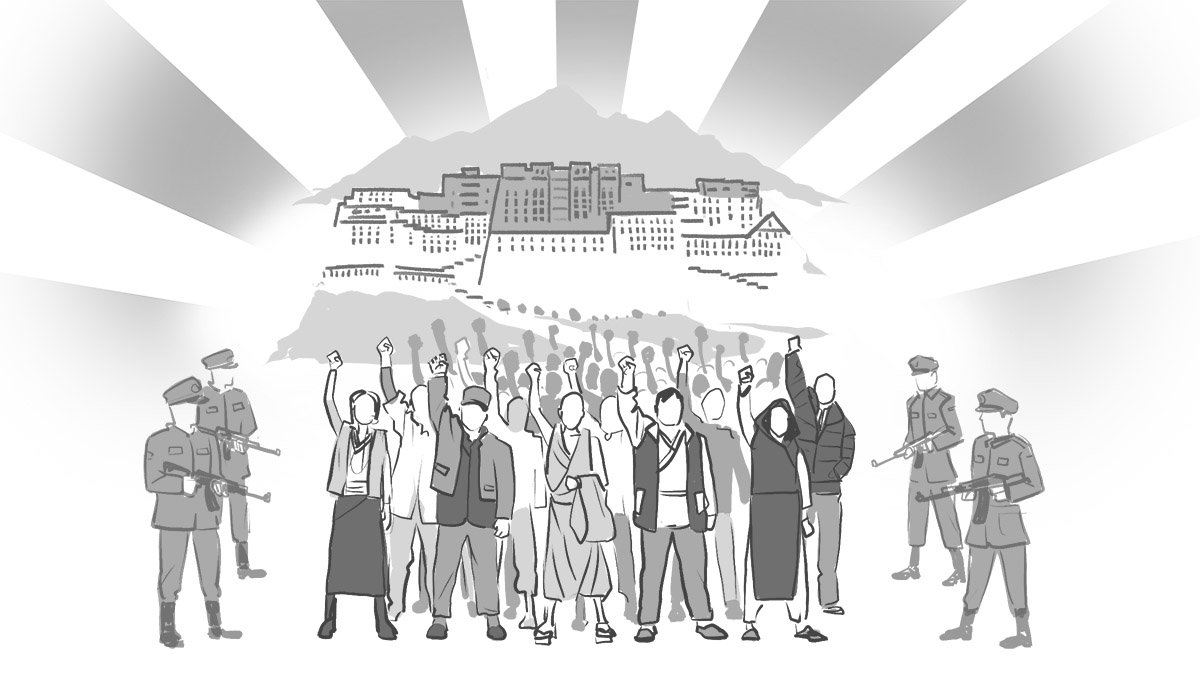
(TibetanReview.net, Jun21, 2017) – China uses euphemisms of benign-sounding policy terms as a propaganda tool to carry out a policy of brutal repression of the Tibetan people, said New York-based Human Rights Watch as it released on Jun 19 an illustrated glossary explaining a dozen such terms in their actual-use context. China uses in its official media such opaque policy terms to tighten repression in Tibet, the international human rights group said.
Tibet: A Glossary of Repressionlists terms that appear to be even positive but are in fact used to ensure total compliance and surveillance by Chinese officials of ordinary Tibetan people.
Terms such as “comprehensive rectification,” “no cracks, no shadows, no gaps left,” and “every village a fortress, everyone a watchman” relate to nothing but political and social control, the group said.
The group said these terms were being used repeatedly not only to persuade populations inside and outside Tibet of the correctness of the Chinese Communist Party’s rule and its policies, but also to deter criticisms of the Party and any challenge to its rule.
What is more, only few of these terms are explained in a manner comprehensible to the general public, reflecting a profoundly repressive approach to governance in Tibet.
The Chinese government has long adhered in the Tibetan regions – including especially the Tibet Autonomous Region (TAR) – to what it calls “stability maintenance” policy. What this entails is a range of policing and administrative systems aimed at preventing, controlling, or punishing social dissent and social disorder used across China – as one way to eradicate support for the Dalai Lama.
And when a new wave of protests in support of the Dalai Lama broke out across the Tibetan plateau in spring 2008, Party leaders commissioned researchers to develop new methods to prevent future unrest, the group noted.
The result of this has been the introduction, from 2011 onward, of new administrative and security mechanisms in the TAR, which included stationing of permanent teams of cadres as managers in every monastery and religious institution, stationing of teams of cadres on three-yearly basis in every village to organize security operations and political education, and the setting up of “grid system” offices to monitor and manage each block or group of homes in every town and many villages.
According to Sophie Richardson, China director at Human Rights Watch, “Understanding terms like ‘social rectification’ makes clear Chinese authorities’ intentions in Tibet: that all life and daily behavior will be under surveillance, and any problematic conduct will be identified and swiftly punished.”


